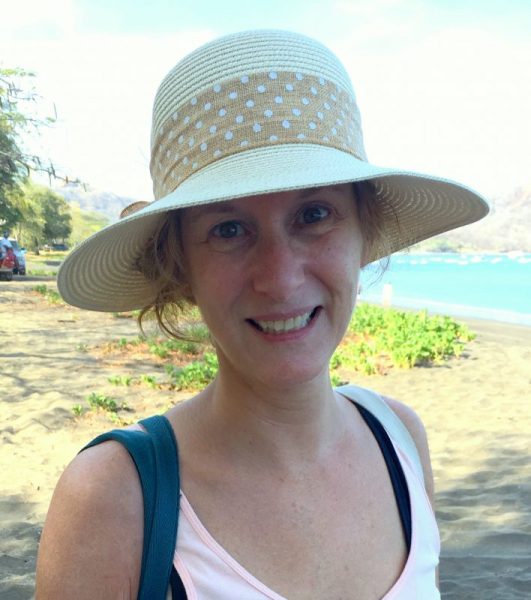$15M P’ville Schools Project Continues to Receive Pushback as Vote Nears
News Based on facts, either observed and verified directly by the reporter, or reported and verified from knowledgeable sources.
Next Tuesday’s school district referendum authorizing $15 million to be used for school district upgrades received considerable negative feedback at the Dec. 3 annual joint meeting of the Pleasantville Board of Education and Village Board.
Critics of the project cited a lack of communication between the school board and residents, accusing officials of rushing the vote, insufficient time to understand the multifaceted project and losing the community’s trust.
“Big projects are ones that everybody deserves to know about, and the fact that you don’t do a districtwide or village-wide mailer is ridiculous,” said resident Jonathan Cunningham. “It’s not that expensive and you should have done two or three of those.”
Cunningham also argued that most village residents who will be paying for the bond do not have children in school.
“The fact that you’re missing that population is a big mistake,” he said.
If approved, the $15 million would pay for upgrades to outdoor facilities such as resurfacing the main field turf, replacing the track, adding bathrooms and a concession area, lighting the main field, installing turf on the practice field and adding lights to the newly-turfed practice field area.
Building improvements would include new security infrastructure, replacing air conditioning equipment at Bedford Road School and new hot water pumps at the high school. The estimated tax hike for those living in the school district is expected to be $167 a year for the first two years of the 15-year bond before expiring debt is anticipated to negate the increase. The higher tax would go into effect for the 2027-28 school year.
Voter authorization would allow up to $13 million in borrowing and shift $2 million from reserve funds.
Joanne Homlish said she received a mailer in October, the first she heard of the proposition.
“The communication on this project has been horrendous,” Homlish said. “You said you’ve been working on this project for about a year. I would really have appreciated knowing about this a lot sooner.”
Homlish said talk among residents shows how little is known about the project.
“That’s going to make this project very difficult to put through,” she said.
But resident Bjorn Schellenberg said he was very impressed with the district’s “clear and complete” communication.
At a community forum last month, several residents urged the board to separate items in the large-scale project so more important needs, such as heating and security, could be voted on individually, potentially reducing the tax impact. Resident Joe Stargiotti said the district should delay the vote until spring or split it into a series of votes.
“That gives the community an opportunity to review the project so they can speak about it,” Stargiotti said. “You can have a resolution this evening or call a special meeting before the vote. Your next meeting is the day of the vote and by then it’s too late. You don’t have to have one big bond; you can do it in four small bonds.”
“I would seriously recommend decoupling the different items in the bond,” added resident Claire Schiffman. “The entire bond will fail if the turf and the lights are included with other essential maintenance items. Personally, I know I will vote against it.”
John Chow, the district’s assistant superintendent for business, explained that parts of the project such as re-turfing the fields and installing field lights have to be coupled with building work to qualify for state aid. The project is expected to be eligible for building aid that would reimburse 53 percent of the project’s cost.
Board President Erin Ballard, who noted that board members spent more than 100 hours preparing the bond proposal, explained that the timeline is largely dictated by the state Department of Education (SED).
“The reason we can’t wait until May to vote for something we want to start in March of 2026 is because of the lead time it takes to do the design phase, the estimate phase, get real costs, make real choices and then get SED approval.” Ballard said. “It’s not disingenuous, it’s not hiding the ball, this is how the process works.”
She also contended that separating the list of items would be irresponsible because the project reflects district needs.
“I don’t feel we would be responsible on our part just based on what people like and don’t like,” Ballard added. “It’s about what are the needs of the district. To me decoupling looks like it’s totally needs-based and I don’t think that’s going to accomplish what people actually want.”
Another contentious issue is the proposed new lights at the main high school field, which would be at the top of 75-foot poles.
Ashland Avenue resident Dan Merritts, whose property abuts the field, said the lights would be twice as high as 70 Memorial Plaza, the mixed-use building next to the post office. He asked if the vote on the lights could be separate.
“Why jeopardize a great project when so many people are against a large part of it, especially the lights,” Merritts said. “Make the lights separate so we can approve what is important.”
Other concerns regarding the lights included noise from night games and light pollution, the devaluation of properties near the fields and impacts on bird migration.
The board spent time discussing a policy to regulate field playing times for various school and community teams if new lights were installed, which would extend the field use.
The vote is next Tuesday, Dec. 17 from 6:30 a.m. to 9 p.m. in the Pleasantville Middle School multipurpose room.

Abby is a seasoned journalist who has been covering news and feature stories in the region for decades. Since The Examiner’s launch in 2007, she has reported extensively on a broad range of community issues. Read more from Abby’s editor-author bio here. Read Abbys’s archived work here: https://www.theexaminernews.com/author/ab-lub2019/
